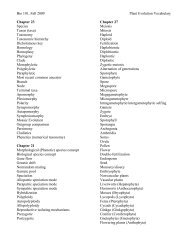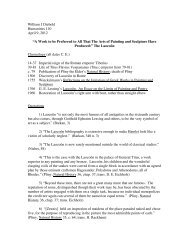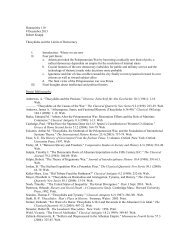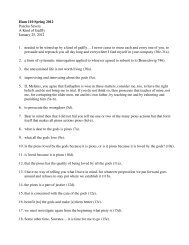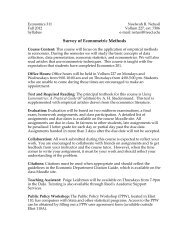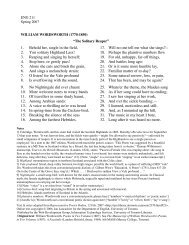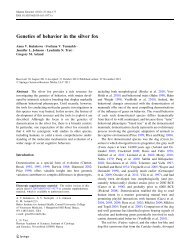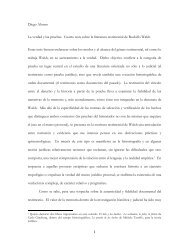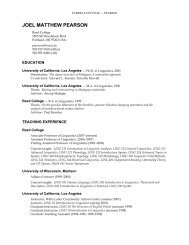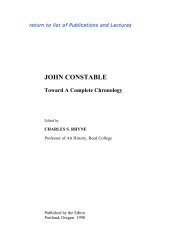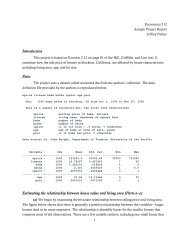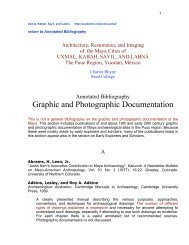REED COLLEGE SCIENCE OUTREACH PROPERTIES OF MATTER
REED COLLEGE SCIENCE OUTREACH PROPERTIES OF MATTER
REED COLLEGE SCIENCE OUTREACH PROPERTIES OF MATTER
You also want an ePaper? Increase the reach of your titles
YUMPU automatically turns print PDFs into web optimized ePapers that Google loves.
18<br />
After confirming the student’s finding, have the students circle “yes” or “no” in their<br />
results table in the appropriate row. Remind the students not to be disappointed if their<br />
circuit doesn’t manage to make the LED light up; it just means that their type of fruit<br />
does not make as effective of a battery as others.<br />
20. Go to each of the other tables, attach an LED, assign a student at the table to tell<br />
the class if they can see any light being produced, and have the class fill out the<br />
appropriate row in their results table. If one of the circuits works particularly well, make<br />
sure the entire class has a chance to see the LED light up.<br />
Note: Some of the fruit circuits might not be strong enough to light the LED, but the<br />
lemon circuit should work. If you are having trouble getting the lemon circuit to light<br />
up the LED, try the following:<br />
(a) Double check that the copper nail is attached to the bent leg of the LED.<br />
(b) Make sure the nails are connected properly. (No two nails of the same type<br />
should be connected...i.e. no copper attached to copper etc.)<br />
(c) Measure the voltage across the two lemons on either end of the circuit. It should<br />
be between 2.5-4 Volts.<br />
(d) To increase the voltage, try moving the nails closer together and/or pushing the<br />
nails further into the lemons. This will increase the surface area of contact<br />
between the nails and the lemon, which should increase the voltage.<br />
Final Discussion and Wrap-Up (5-10 minutes)<br />
21. Have a Reed teacher go around and collect each of the fruit circuits. Meanwhile,<br />
gather the class’s attention for a final class discussion. Have the students look at their<br />
results table. Ask a student to tell you which fruit produced the highest voltage. Ask<br />
them if they know why. (Fruits that have more citric acid—the ones that are most<br />
sour—generally conduct electricity most efficiently.)<br />
22. Ask a different student which circuits (if any) were able to light the LED. Ask the<br />
students if they thinks the results make sense.<br />
Note: LEDs require a certain minimum voltage to produce light. If that voltage isn’t<br />
reached, then we don’t expect the LED to produce light.<br />
23. Have students fill out the conclusion section of their worksheets as best they can.<br />
Before saying goodbye to the class for the week, pass out stickers for completed<br />
worksheets and check for questions in the Question Box.



